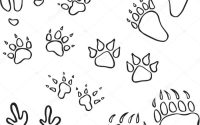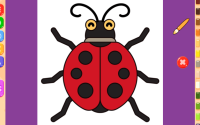Animal Cell Coloring Questions A Colorful Exploration
Cell Membrane and Transport

Animal cell coloring questions – The cell membrane, a dynamic and vital component of all animal cells, acts as a gatekeeper, controlling the passage of substances into and out of the cell. This selective permeability is crucial for maintaining the cell’s internal environment and enabling its various functions. Understanding the structure and mechanisms of membrane transport is fundamental to comprehending cellular processes.The cell membrane is a fluid mosaic, composed primarily of a phospholipid bilayer.
This bilayer consists of two layers of phospholipid molecules, each with a hydrophilic (water-loving) head and two hydrophobic (water-fearing) tails. Embedded within this bilayer are various proteins, cholesterol molecules, and carbohydrates, contributing to the membrane’s diverse functions. The proteins act as channels, pumps, or receptors, facilitating the transport of specific molecules. Cholesterol maintains membrane fluidity, preventing it from becoming too rigid or too fluid.
Carbohydrates are involved in cell recognition and signaling.
Passive Transport
Passive transport mechanisms move substances across the cell membrane without requiring energy expenditure by the cell. This is because these processes rely on the inherent kinetic energy of the molecules themselves and their concentration gradients.Diffusion is the movement of molecules from a region of high concentration to a region of low concentration, down their concentration gradient. For example, oxygen diffuses from the lungs into the bloodstream, following its concentration gradient.
Osmosis is a specific type of diffusion involving the movement of water across a selectively permeable membrane from a region of high water concentration (low solute concentration) to a region of low water concentration (high solute concentration). Plant cells use osmosis to maintain turgor pressure. Facilitated diffusion utilizes membrane proteins to assist the movement of molecules down their concentration gradient.
This process speeds up the rate of transport for molecules that cannot easily cross the phospholipid bilayer, such as glucose. Glucose transporters, for example, facilitate the movement of glucose into cells.
Active Transport
Active transport mechanisms move substances across the cell membrane against their concentration gradient, requiring energy input from the cell, typically in the form of ATP. This energy is necessary to overcome the natural tendency of molecules to move down their concentration gradient. Active transport often involves specific protein pumps that bind to the molecule being transported and use ATP to change their conformation, moving the molecule across the membrane.
The sodium-potassium pump, for instance, maintains the electrochemical gradient across cell membranes by actively pumping sodium ions out of the cell and potassium ions into the cell.
Diagram of Membrane Transport
Imagine a diagram depicting the cell membrane as a fluid mosaic. The phospholipid bilayer is represented by two parallel lines with small circles representing the phospholipid heads and wiggly lines representing the hydrophobic tails. Various proteins are embedded within the bilayer, some spanning the entire membrane (integral proteins), others partially embedded (peripheral proteins).One section of the diagram illustrates simple diffusion, showing small molecules moving freely across the membrane down their concentration gradient.
Another section shows facilitated diffusion, with a protein channel facilitating the movement of larger molecules. A third section depicts active transport, showing a protein pump using ATP to move molecules against their concentration gradient. Clear labels should identify each process (diffusion, osmosis, facilitated diffusion, active transport) and the relevant membrane components (phospholipid bilayer, transport proteins, ATP). Captions should concisely explain the mechanisms involved in each type of transport.
For osmosis, a separate section could show water moving across a selectively permeable membrane from a hypotonic solution (high water potential) to a hypertonic solution (low water potential).
Animal Cell Processes
The inner workings of an animal cell are a marvel of coordinated activity, a bustling metropolis of molecular machinery. Understanding the key processes—cellular respiration and protein synthesis—is crucial to grasping the cell’s fundamental functions and its role in the larger organism. These processes are not isolated events but intricately interwoven, ensuring the cell’s survival and contribution to overall bodily function.Cellular Respiration: Energy ProductionCellular respiration is the process by which cells break down glucose, a simple sugar, to release energy in the form of ATP (adenosine triphosphate).
This energy is the cell’s primary fuel, powering all its activities from muscle contraction to protein synthesis. The process is remarkably efficient, extracting a significant portion of the energy stored within glucose’s chemical bonds. The efficiency of this process is critical for the survival of the cell and the organism as a whole. Inefficient energy production would lead to cellular dysfunction and ultimately, organismal failure.
The Role of Mitochondria in Cellular Respiration
Mitochondria, often referred to as the “powerhouses” of the cell, are the organelles where the majority of cellular respiration takes place. These double-membraned organelles possess their own DNA and ribosomes, a testament to their evolutionary origins as independent bacteria. The inner mitochondrial membrane, highly folded into cristae to maximize surface area, houses the electron transport chain, a crucial component of oxidative phosphorylation, the final stage of cellular respiration.
This stage generates the vast majority of ATP molecules, the cell’s energy currency. The citric acid cycle, also known as the Krebs cycle, occurs in the mitochondrial matrix, further breaking down glucose-derived molecules and releasing more energy. The coordinated actions of these mitochondrial processes are essential for the efficient generation of ATP.
Protein Synthesis: From Transcription to Translation
Protein synthesis is the process by which cells build proteins, the workhorses of the cell. These proteins perform a vast array of functions, acting as enzymes, structural components, transporters, and signaling molecules. The process involves two major steps: transcription and translation.Transcription is the process of copying the genetic information encoded in DNA into a messenger RNA (mRNA) molecule. This occurs in the cell nucleus.
The DNA double helix unwinds, and an enzyme called RNA polymerase synthesizes a complementary mRNA strand. This mRNA molecule then carries the genetic code out of the nucleus to the ribosomes.Translation is the process of using the mRNA sequence to assemble a polypeptide chain, which folds into a functional protein. This takes place in the cytoplasm at the ribosomes.
Transfer RNA (tRNA) molecules, each carrying a specific amino acid, recognize and bind to their corresponding codons (three-nucleotide sequences) on the mRNA. The ribosome facilitates the formation of peptide bonds between adjacent amino acids, forming the polypeptide chain. After synthesis, the polypeptide chain undergoes folding and modification to become a functional protein. The accuracy of both transcription and translation is paramount, as errors can lead to non-functional or even harmful proteins.
For example, a single point mutation in the DNA sequence can alter the amino acid sequence of a protein, potentially impacting its function and leading to diseases like sickle cell anemia.
Unlocking the mysteries of the animal cell begins with engaging questions about its intricate components. These questions spark curiosity, leading you on a journey of discovery. To verify your understanding and deepen your knowledge, consult the comprehensive guide found here: animal cell coloring answers key. This resource empowers you to confidently tackle further animal cell coloring questions, strengthening your grasp of cellular biology.
Cellular Reproduction (Mitosis)
Mitosis is a fundamental process in all eukaryotic cells, responsible for growth, repair, and asexual reproduction. It’s a carefully orchestrated series of events that ensures the precise duplication and distribution of the cell’s genetic material to two daughter cells, each identical to the parent cell. Understanding the phases of mitosis is crucial to grasping the mechanics of life itself.
Phases of Mitosis
Mitosis is a continuous process, but for clarity, it’s divided into distinct phases: prophase, metaphase, anaphase, and telophase. Each phase is characterized by specific chromosomal movements and cellular changes. These phases seamlessly transition into one another, creating a dynamic and intricate cellular ballet.
- Prophase: Chromatin condenses into visible chromosomes, each consisting of two identical sister chromatids joined at the centromere. The nuclear envelope begins to break down, and the mitotic spindle, a structure composed of microtubules, starts to form. This phase marks the beginning of the visible separation of genetic material.
- Metaphase: The chromosomes align along the metaphase plate, an imaginary plane equidistant from the two poles of the cell. This precise alignment ensures that each daughter cell receives one copy of each chromosome. The spindle fibers attach to the kinetochores, protein structures located at the centromeres of the chromosomes.
- Anaphase: Sister chromatids separate at the centromere and are pulled towards opposite poles of the cell by the shortening of the spindle fibers. This separation ensures that each daughter cell receives a complete set of chromosomes. The cell elongates as the poles move further apart.
- Telophase: Chromosomes arrive at the poles and begin to decondense, returning to their chromatin form. The nuclear envelope reforms around each set of chromosomes, and the mitotic spindle disassembles. Two distinct nuclei are now visible within the cell.
Cytokinesis
Cytokinesis is the final stage of the cell cycle, following telophase. It involves the division of the cytoplasm, resulting in two separate daughter cells. In animal cells, a cleavage furrow forms, constricting the cell membrane until it pinches the cell in two. This process ensures that each daughter cell receives roughly equal amounts of cytoplasm and organelles.
Visual Representation of Mitosis
Imagine a single cell with its DNA loosely organized as chromatin.* Prophase: The chromatin condenses into distinct, X-shaped chromosomes. The nuclear membrane dissolves, and spindle fibers begin to extend from opposite ends of the cell, like tiny ropes.* Metaphase: The chromosomes line up neatly in the middle of the cell, like soldiers standing in formation. Each chromosome is attached to spindle fibers at its centromere.* Anaphase: The sister chromatids of each chromosome separate and are pulled to opposite ends of the cell by the shortening spindle fibers.
It’s like two teams pulling on a rope, each taking half.* Telophase: The chromosomes reach the opposite ends of the cell and begin to uncoil. New nuclear membranes form around each set of chromosomes, creating two distinct nuclei.* Cytokinesis: The cell membrane pinches inward, dividing the cytoplasm and organelles, resulting in two identical daughter cells.
Each daughter cell now contains a complete set of chromosomes and is ready to begin the cell cycle anew.
Animal Cell Coloring Activities & Resources

Creating engaging and informative animal cell coloring pages is a fantastic way to reinforce learning about cell structures and functions. By actively participating in coloring and labeling, students can improve their understanding and retention of key concepts. This section will explore simple ways to design such pages and highlight valuable online resources for further exploration.
Effective learning often involves multiple modalities, and visual aids play a crucial role. Coloring pages, coupled with interactive online resources and varied visualization methods, provide a multi-sensory approach to mastering the intricacies of animal cells. This holistic approach ensures comprehensive understanding and better retention of complex biological information.
Creating a Simple Animal Cell Coloring Page, Animal cell coloring questions
To create a simple animal cell coloring page, begin by sketching a large circle to represent the cell membrane. Within this circle, draw smaller shapes representing various organelles. For example, the nucleus could be a large, centrally located circle, perhaps slightly off-center. The nucleolus could be a smaller circle within the nucleus. The endoplasmic reticulum could be depicted as a network of interconnected tubes and sacs, some rough (with ribosomes represented as small dots) and some smooth.
Mitochondria could be drawn as bean-shaped structures. The Golgi apparatus could be shown as a stack of flattened sacs. Lysosomes could be small, circular organelles. Finally, the cytoplasm should fill the space between the organelles. Remember to leave ample space around each organelle for labeling.
Each organelle should be clearly differentiated in shape and size to aid in identification and labeling. After completing the drawing, provide space for students to label each organelle using their preferred coloring tools.
Online Resources for Learning About Animal Cells
Many valuable online resources cater to various learning styles and age groups. Educational websites, such as those offered by educational institutions and scientific organizations, often provide interactive simulations, detailed diagrams, and videos that enhance understanding. For example, sites like the National Geographic website often have interactive sections on cell biology. Khan Academy offers video tutorials and practice exercises that cover animal cell structures and functions in a clear and concise manner.
Other reputable sources may include educational YouTube channels dedicated to biology, which offer animated explanations and visual aids. These resources are easily accessible and provide a diverse range of learning experiences.
Comparing Visualization Methods for Animal Cells
Microscopy, diagrams, and models each offer unique perspectives on visualizing animal cells. Microscopy provides direct observation of real cells, revealing intricate details of structure and function not easily captured by other methods. However, microscopy requires specialized equipment and expertise. Diagrams offer simplified, two-dimensional representations, emphasizing key organelles and their relationships. They are easily accessible and reproducible but lack the three-dimensional complexity of real cells.
Models, whether physical or digital, provide a three-dimensional representation that can be manipulated and explored interactively, allowing for a more intuitive understanding of spatial relationships within the cell. Each method has its strengths and weaknesses, and using a combination can provide the most comprehensive understanding. For instance, a student might start with a diagram to learn the names and basic functions of organelles, then view a 3D model to grasp their spatial arrangement, and finally, examine microscopic images for detailed structural information.
Common Misconceptions about Animal Cells: Animal Cell Coloring Questions
Understanding animal cells is crucial for grasping fundamental biological processes. However, several misconceptions frequently arise, hindering a complete comprehension of their structure and function. These inaccuracies often stem from simplified representations in educational materials or a lack of nuanced explanation. Addressing these misconceptions is key to building a robust understanding of cell biology.
Animal Cells Always Have a Cell Wall
This is a common misconception, likely stemming from the frequent depiction of plant cells, which possess a rigid cell wall. Animal cells, unlike plant cells, lack a cell wall. The absence of a cell wall contributes to the flexibility and diverse shapes observed in animal cells. The misconception might arise from a lack of distinction between plant and animal cell characteristics in introductory biology lessons, leading students to generalize the presence of a cell wall across all cell types.
The flexible cell membrane is the outer boundary of the animal cell, providing selective permeability and maintaining cell integrity.
All Animal Cells Are the Same Size and Shape
Another misconception is that all animal cells are uniform in size and shape. In reality, animal cells exhibit remarkable diversity in both size and shape, reflecting their specialized functions. Nerve cells, for example, are long and slender, facilitating signal transmission over long distances. Muscle cells are elongated and cylindrical, optimized for contraction. This misconception may originate from simplified diagrams that show cells as standardized circles or squares, neglecting the vast morphological diversity found in nature.
The size and shape of an animal cell are directly related to its function within the organism.
Mitochondria Are the Only Organelles Involved in Energy Production
While mitochondria are the primary sites of ATP production through cellular respiration, it’s inaccurate to state they are theonly* organelles involved in energy generation. Other organelles, such as chloroplasts (in photosynthetic organisms, though not in animals) and even the cytoplasm itself, contribute to energy-related processes. The misconception that mitochondria are solely responsible might arise from an overemphasis on their crucial role in cellular respiration, neglecting the contribution of other cellular components to the overall energy budget.
For instance, glycolysis, a crucial step in energy metabolism, occurs in the cytoplasm before the pyruvate enters the mitochondria. Therefore, a comprehensive understanding requires acknowledging the integrated nature of energy production within the cell.



